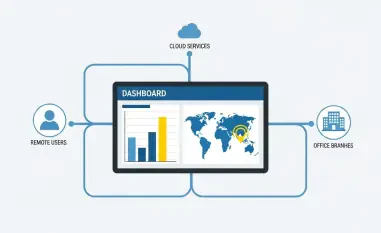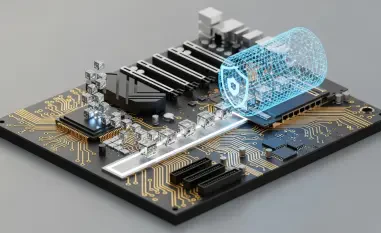NVIDIA has recently released a critical security update addressing several severe vulnerabilities in its GPU Display Driver, which pose significant risks to both Windows and Linux systems. These vulnerabilities could potentially lead to remote code execution, privilege escalation, and other security threats. Users of NVIDIA graphics cards are strongly urged to apply these updates immediately to safeguard their systems from these potential exploits.
Overview of NVIDIA GPU Display Driver and Its Importance
Role of NVIDIA GPU Display Driver
The NVIDIA GPU Display Driver is a crucial software component that facilitates communication between an operating system and an NVIDIA graphics card. It manages complex tasks such as graphics rendering, hardware acceleration, and display management, ensuring smooth performance in visually intensive applications like gaming and video editing. The driver supports various graphics APIs including DirectX and OpenGL, and it is regularly updated to optimize performance and maintain compatibility with new graphics technologies.
Without the NVIDIA GPU Display Driver, users would experience suboptimal graphics performance and potentially unstable system behavior when running graphics-intensive applications. Regular updates to the driver not only enhance performance but also address security vulnerabilities that could be exploited by malicious actors. Keeping the GPU Display Driver up to date is therefore essential for both performance and security.
Importance of Regular Updates
Regular updates to the NVIDIA GPU Display Driver are crucial not only for improving performance but also for addressing vulnerabilities that could compromise system security. These updates often include patches for newly discovered security flaws, optimization improvements, and support for emerging graphics technologies. For users who rely heavily on graphics-intensive tasks, such as professional video editing or high-definition gaming, staying up-to-date with the latest drivers is vital for a seamless experience.
The recent update released on October 22, 2024, underscores the importance of timely updates. It addresses multiple high-severity vulnerabilities that, if left unpatched, could have serious consequences for system security. NVIDIA’s commitment to providing regular driver updates is a testament to their proactive approach in maintaining both performance and security for their user base.
Details of the October 2024 Security Update
Identified Vulnerabilities
The October 2024 security update from NVIDIA addresses a series of high-severity vulnerabilities that could potentially be exploited for malicious purposes. Among these is CVE-2024-0126, a vulnerability that affects both Windows and Linux drivers. If exploited, this vulnerability allows privileged attackers to escalate their permissions, leading to outcomes such as remote code execution, denial of service, information disclosure, and data tampering. This particular flaw has a high CVSS base score of 8.2, highlighting its severity and the critical nature of the update to mitigate its risks.
Other significant vulnerabilities addressed in the update include CVE-2024-0117 through CVE-2024-0121, which are found in the user mode layer of the Windows driver. These vulnerabilities enable unprivileged users to perform out-of-bounds reads, potentially resulting in similar impacts to those of CVE-2024-0126. With a CVSS score of 7.8, these vulnerabilities also represent a high level of severity. The detailed security bulletin lists the specific CVEs addressed across various Windows driver branches and provides the necessary updates for products such as GeForce, NVIDIA RTX, Quadro, NVS, and Tesla.
Windows and Linux Versions Affected
The security update encompasses a wide range of NVIDIA products and driver branches for both Windows and Linux operating systems. For Windows users, the affected driver branches include versions 566.03 to 538.95, with updates available for different products and branches. The main CVEs addressed are associated with the user mode layer vulnerabilities, which pose significant security risks if not patched promptly.
For Linux users, the impacted driver branches are R565, R550, and R535. The primary vulnerability affecting Linux systems is CVE-2024-0126, which carries the same high-severity implications as its Windows counterpart. NVIDIA provides specific updates for various products within these driver branches, with new versions such as 565.57.01, 550.127.05, and 535.216.01 available for download. Users of NVIDIA graphics cards across both operating systems are strongly encouraged to install these updates to protect their systems from potential exploits.
Urgency of Applying the Security Update
Critical Nature of the Update
The critical nature of this security update cannot be overstated, given the high-severity vulnerabilities it addresses. The potential for remote code execution, privilege escalation, and other security breaches makes it imperative for users to apply the updates as soon as possible. Failure to do so could leave systems vulnerable to attacks that exploit these flaws, leading to significant consequences such as data loss, system corruption, and unauthorized access to sensitive information.
NVIDIA’s security bulletin emphasizes the urgency of the situation, providing detailed instructions for downloading and installing the necessary updates. The company highlights the importance of timely updates in ensuring the security and proper functioning of systems that depend on NVIDIA’s graphics technology. By promptly addressing these vulnerabilities, users can mitigate the risks associated with potential exploits and maintain the integrity of their systems.
Steps to Safeguard Systems
To safeguard against the identified vulnerabilities, users are advised to download and install the security updates from the NVIDIA Driver Downloads page. Ensuring that the GPU Display Driver is up to date is a crucial step in maintaining both performance and security. Users should regularly check for driver updates and apply them as soon as they become available to protect their systems from emerging threats.
NVIDIA’s proactive approach in releasing timely security updates reflects broader trends within the technology sector, where continuous updates and patches are essential in combating cyber threats. By prioritizing the security of their products, NVIDIA demonstrates a commitment to protecting users and maintaining the reliability of their graphics technology.
Conclusion
NVIDIA has recently rolled out a crucial security update that addresses several severe vulnerabilities within its GPU Display Driver. These flaws present significant risks for both Windows and Linux operating systems. If left unpatched, these vulnerabilities could be exploited by malicious actors to execute remote code, escalate privileges, and lead to a variety of other security threats. The potential consequences are significant, given that such exploits can compromise the integrity and functionality of users’ systems. It is imperative for anyone using NVIDIA graphics cards to install these security updates without delay. Failing to do so leaves systems open to potential attacks, which could result in unauthorized access, data breaches, and other forms of malware infections. By applying these critical patches, users can significantly reduce the risk of security breaches and maintain the safety and integrity of their digital environments. NVIDIA’s proactive stance in releasing this update underscores the importance of staying vigilant and up-to-date with software security measures.













